Swami Vivekananda was a prince among sannyasis. He was a sannyasin of the highest order, Paramahamsa Parivrajakacharya, who dwelt constantly at the superconscious realm. In the hymm Sukashtaka, there occurs the line, निस्त्रैगुण्ये पथि विचरतां को विधि: को निषेधः?, “What injunction or prohibition can apply to an illumined soul who moves freely on the transcendent path beyond the three gunas?”
Nevertheless, in spite of being a fully illumined soul, Swami Vivekananda lived the life of a true sannyasin, even when he was in the West. Many people think that Swamiji lived a luxurious life in the West. This is not true. He himself wrote in one of his letters that he led a wandering life in India and was doing the same in America also.
Monastic life was for Swamiji what an airport is for a plane. A plane may fly all over the world, but it finally returns to the airport. In the same way, although he travelled all over the world, Swamiji always returned to the monastic way of life. Monastic life was not a limitation but a means of liberation for Swamiji. Monastic life liberated him from family and social bonds and made him free to devote his life to the service of humanity. As a matter of fact, the whole of his public life (which lasted only nine and a half years) was a continual act of self-sacrifice at the altar of love for humanity. During this brief period Swamiji made important contributions to the welfare of humanity
These contributions can be grouped under three categories: contributions to Hinduism, contributions to the uplift of India, and contributions to world culture. Owing to the limitation of space, I can discuss here only about Swamiji’s contributions to Hinduism.
Swamiji’s contributions to Hinduism
1) Identity and unity
One main contribution that Swami Vivekananda made to Hinduism was to give it a proper identity, a totality, a wholeness. Before Swamiji came on the scene, there were only several sects, each more or less independent, each claiming superiority over the others. There was no clear understanding of Hinduism as the common ground of all these sects. Sister Nivedita in her Introduction to The Complete Works of Swami Vivekananda, wrote: ‘Of the Swami’s address before the Parliament of Religions, it may be said that when he began to speak it was of “the religious ideas of the Hindus”, but when he ended, Hinduism had been created.’ It was Swami Vivekananda who showed for the first time that Hinduism as a whole has certain basic concepts which are common to all the sects. These basic concepts give Hinduism its distinctive identity.
Swami Vivekananda gave Hinduism not only its identity but also unity. By going to America as the first Hindu missionary to West, by representing Hinduism at the Parliament of Religions in 1893, and by preaching Hinduism in the West, Swamiji himself became the symbol of unity of Hinduism (and not as the head of a new sect). Through his lectures and letters he roused the consciousness of Hindus, reminded them of their common heritage, and strengthened the bond of unity among the Hindus. Swamiji gave Hindus a sense of ‘common community’. Pointing this out, the scholarstatesman K. M. Panicker wrote: ‘This new Shankaracharya may well be claimed to be a unifier of Hindu ideology’.
2) Preservation of Hinduism’s rich diversity
Hinduism is a vast conglomeration of institutions, customs, practices, belief-systems, philosophies, cults, deities, scriptures and so on which constitute its mind-boggling diversity. Sri Ramakrishna and Swami Vivekananda accepted the whole of Hinduism with all its diversity. They accepted the whole of the Vedas, Jnana Kanda as well as Karma Kanda: all the other scriptures such as Puranas and Itihasas; all the sects such as Shaivism, Shaktism and Vaishnavism; all the schools of philosophy such as Advaitism, Dualism, etc; all the saints and sages; all the forms of worship from idol worship to worship of man as God; all experiences, myths and legends. By accepting and revitalising all the diversities Sri Ramakrishna and Swami Vivekananda helped to preserve them. By contrast, the reform movements, such as the Brahmo Samaj, tried to force Hinduism into their own Procrustean beds. Had any of these reform movements succeeded in dominating Hinduism, the Hindu religion would have lost much of its priceless cultural and spiritual wealth. That is why Sri C. Rajagopalachari, the First Governor-General of India and an astute politician, once stated, ‘Swami Vivekananda saved Hinduism and saved India; but for him, we would have lost our religion and would not have gained our freedom.’ The truth of the above statement can be understood when we look at the history of Europe in the 16th century. The reform movement known as Protestant Reformation destroyed Christianity’s great spiritual wealth, mystical tradition, monasticism, reverence for saints, sanctity of motherhood, etc., and replaced them with economic competition and the capitalist drive in countries like Norway, Sweden, Denmark, Germany and England. Such a situation was prevented in India by the timely appearance of Sri Ramakrishna and Swami Vivekananda in the l9th century.
3) Universalisation
In ancient times, Sanatana Dharma or Eternal Religion of the Indian subcontinent was a universal religion, in the sense that it was open to all. It could absorb various foreign hordes and creeds that were introduced into India. But during the Middle Ages Hinduism closed its doors to foreign elements, and became a narrow ethnic religion. One of the tasks Swamiji set for himself was to make Hinduism once again a universal religion open to all peoples and races.
Swamiji made Hinduism not only universal but also dynamic. He infused a missionary zeal into the ranks of Hindus. He wanted that India’s ancient message of spirituality should spread to all parts of the world and bring spiritual enlightenment to all people. He exhorted; ‘Up, India, and conquer the world with your spirituality.’
4) Hinduism’s rise to eminence
At the end of the 19th century, people in the West had a poor opinion of India and Hindus. Hinduism was regarded as a religion of superstitions, and Hindus as people who worshipped idols, the cow and the snake. One of the achievements of Swami Vivekananda’s work in the West was to change this wrong view.
According to Swamiji, religion has an essential inner core and a non-essential outer shell. The non-essential shell consists of myths, rituals, customs, festivals, etc. The essential core comprises spirituality. Swamiji showed that in the realm of spirituality, Hinduism is superior to all other religions. Hinduism’s preeminence comes from the fact that Hindu spirituality is based on the eternal truths and laws of the spiritual world.
Science has several branches such as physics, chemistry, botany, zoology, etc. But they are all based on the eternal and universal truths and laws of the physical world. In the same way, the different religions of the world are based on the eternal and universal truths and laws of the spiritual world. These spiritual truths and laws were first discovered by the ancient sages of India. We admit the superiority of science in the physical realm. By the same token, said Swamiji, the world should recognise the superiority of Hindu spirituality in the spiritual realm. Since the eternal universal principles of spirituality, which form the basis of all religions, were discovered and systematised by the ancient Hindu sages, Hinduism should be regarded as the Mother of all religions. Swamiji’s establishment of the spiritual pre-eminence of Hinduism has given to Hindus pride in their religion, and has made them conscious of the great wealth of their spiritual heritage
Several Western scholars (like Max Weber) and some Indian religious leaders had blamed Hinduism for being the cause of India’s downfall and backwardness. They therefore wanted to ‘reform’ Hinduism. Swami Vivekananda clearly showed that Hindu religion was not the cause of India’s downfall; the real cause was social—the neglect of the poor masses and neglect of women.
5) Importance of the Upanishads
Another contribution of Swami Vivekananda to Hinduism was to spread among people the awareness of the importance of the Upanishads as the record of eternal truths and laws of the spiritual world discovered by the ancient Indian sages. The Upanishads together constitute the Vedanta. The term Vedanta is also used to mean the eternal spiritual truths recorded in the Upanishads, and the system of philosophy based on them.
Hindu religious tradition holds the Upanishads to be the Shruti, the highest authority regarding spiritual matters. Swami Vivekananda explained why the Upanishads are regarded as the highest authority. Apart from this, Swamiji provided the following supports for the establishment of Vedanta as a universal philosophy of religion.
Swamiji showed that the eternal truths revealed in the Upanishads are not contradictory to modern science but are complementary to it. In fact, Vedanta may be regarded as a ‘science of consciousness’.
Swamiji interpreted the Upanishads and other scriptures in the modern language in a way which can be understood even by ordinary people. In fact, it is through Swami Vivekananda’s Works that millions of people in India and other countries have acquired some understanding of the basic principles of Vedanta.
Swamiji did not merely follow the traditional interpretations of Vedanta: he also made original contributions to the understanding and practical application of Vedanta. Whereas traditional Advaitins emphasised the transcendental aspect of Brahman, Swamiji emphasised the immanent aspect. Secondly, Swamiji defined Maya as ‘a statement of facts’, and reduced much of the importance that post-Shankara Advaitins had given to Maya. Thirdly, Swamiji changed Advaita from a philosophy of negation to a philosophy of affirmation of the glory and power of Brahman.
In brief, it may be stated here that just as Shankaracharya re-established Advaita to meet the challenges of the Second Millennium, Swamiji re-established Advaita to meet the challenges of the Third Millennium.
6) Popularization of yoga as a spiritual discipline
The present-day recognition of the importance of Yoga in Hinduism is to a great extent owing to the influence of Swami Vivekananda. Swamiji’s work in this field was along the following lines:
Swamiji separated higher Yoga as a spiritual discipline from physical postures and Yoga for psychic powers.
Secondly, Swamiji made Yoga the practical aspect of Vedanta. The author of the Gita, Sri Krishna made the first attempt to combine Vedanta and Yoga. But in later centuries, owing to the dominance of Vedanta, Yoga came to be neglected. Sri Ramakrishna and Swami Vivekananda restored the balance by reuniting Vedanta and Yoga in the modern world.
Swamiji made original contributions to each of the four Yogas. These contributions are yet to be studied and understood properly. We don’t have scope here to discuss this important subject further.
Swamiji’s idea of ‘Synthesis of Yoga’ as the means of development of all faculties and the development of all round personality is yet another contribution of Swamiji to Hindu spirituality
7) Practical Vedanta
Swamiji showed that Vedantic principles not only help a person to attain Mukti but also, if applied in practical life, help him to face or solve the problems of everyday life. As already mentioned, traditional Advaitins stressed the transcendental aspect of Brahman, whereas Sri Ramakrishna and Swami Vivekananda stressed Its immanent aspect. The immanent aspect is based on two principles: (a) man’s true nature is neither the body nor the mind but the Pratyagatman or Inner Self; (b) the Paramatman or Supreme Self dwells in all people as the Antaryamin, Inner Controller. These two principles, if applied in life, can change our whole outlook on life and can be of great help to us in the following fields:
Moral life: Conventional morality is based on compulsion and fear of God or fear of retributive Karma. But if one thinks of one’s true nature as the Atman, then morality becomes a natural way of life; and one will not abuse one’s body or mind.
Faith in oneself and courage to face the problems of life: If a person realises that there is a divine centre in his soul, he will spontaneously feel faith in himself and inner courage to face the problems of life.
Love and service: If a person understands that the Supreme Self dwells in all people as the Innermost Self, his attitude towards other people will spontaneously change into love and the spirit of service. This idea had always been implied in Hindu scriptures but seldom found application in social life. Swami Vivekananda brought it out and applied it in social life, especially to inspire people to serve the poor, the downtrodden, the sick, and the neglected.
8) Rejuvenation, reorientation and reorganization of Hindu monasticism
Monasticism is declining in most parts of the world except India. In the Western world Christian monasticism is declining because it is unable to meet the challenges of modern life. Even in India, monasticism is now passing through a critical phase. It is in this context that we have to understand Swami Vivekananda’s efforts to rejuvenate monasticism by giving it a new orientation and by adapting the eternal principles of spiritual life to the rapidly changing modern society
If we study the history of Hindu monasticism, we can see three great figures who played key roles in shaping Hindu monastic life. First came Sri Shankaracharya in the 8th century. He is said to have organised Hindu sannyas in sin to Ten Orders (Dashanamis). Another contribution of Shankara was to free sannyasins from social obligations. Yet another work of Shankara was to associate monastic life with learning and scholarship. As a result, from Sri Shankara’s time sannyasins have been the main teachers and preachers of Advaita Vedanta, especially in North India.
The second figure was Madhusudana Saraswati who lived in the 16th century. His great work was to open the doors of monasticism to people belonging to all castes. This led to the induction of large numbers of people into Hindu monasticism, and the creation of huge monasteries known as Akhadas.
The third great figure in the history of Hindu monasticism is Swami Vivekananda who lived in the second half of the 19th century. At the express command of his Guru, Sri Ramakrishna, Swami Vivekananda brought into existence a new monastic Order known as Ramakrishna Math, adapted to the needs of the rapidly changing Indian society and Hindu ethos and the new role India has to play in world affairs. This has led to a significant rejuvenation of Hindu monasticism. Some of the main changes Swamiji introduced into monastic life are briefly stated below:
The first change he initiated relates to harnessing monastic manpower for social welfare. Since sannyasis are free from selfish desires and attachment to the world, they hold in a potential form great power to do good to human beings, and if this power is given a higher direction, it can quickly bring about social prosperity and progress. The main obstacle to this plan of Swamiji was the belief that sannyasins are free from social obligations and are above the need to do Karma Yoga.
Swamiji overcame this obstacle by following a new ideal of service propounded by his Guru, Sri Ramakrishna. Sri Ramakrishna taught that man is to be served as God (Shivajnane jiva-seva). Thus the work done by the sannyasis of the Ramakrishna Mission is not social service but worship of the Lord. Revered Madhavanandaji Maharaj once pointed out that the Karma Yoga done by our sannyasis is only an extension of Bhakti Yoga. Revered Gambhiranandaji called it ‘Seva-Yoga’. Hence the Ramakrishna Mission is not to be regarded as a social service organization but as a spiritual organization.
In the Ramakrishna Order, inner purity of the sannyasis is stressed more than outer austerities. For our sannyasis the ochre robe is a symbol of the fire of inner purity and renunciation.
The Ramakrishna Mission sannyasis follow a modern way of life in food, dress, travel, communication, etc., without compromising the monastic principles of austerity, renunciation and simplicity.
Non-sectarian outlook: In a beautiful hymn to Sri Ramakrishna, Swami Abhedananda states: पूजिता येन वै शश्वत्सर्वेsपि साम्प्रदायिकाः । सम्प्रदायविहीनो य: सम्प्रदाय न निन्दति, that is, ‘[Sri Ramakrishna] did not belong to any sect, but he showed respect to all sects, and never criticised any sect.’ This non-sectarian approach of Sri Ramakrishna has become a tradition in the Ramakrishna Order. The sannyasis of the Ramakrishna Order do not belong to any sect; they can mingle freely with sannyasins of different Akhadas, as well as with Vairagis, Kanphata yogis and others.
Another feature of the Ramakrishna Order is its openness to all without distinctions of caste, religion or race.
Love as the basis of monastic life: This is yet another important feature of the monasticism of the Ramakrishna Math, which has not, however, received much attention. The basis of community life in most of the Hindu monasteries is the sannyasis’ dependence on one another or loyalty to a Guru or to a common ideal. But in the Ramakrishna Order the basis of community life is Sri Ramakrishna’s great love for his disciples, Holy Mother’s allembracing maternal love, and the great tradition of brotherly love shown by the direct disciples of the Master. All the sannyasis of the Ramakrishna Order live like children of the same parents. Their love for their brothers is not ordinary human attachment but divine prema, spiritual love, which divinises all human relationships. Holy Mother Sarada Devi has played an important role in the development of this spiritual love, and in holding together the whole brotherhood in spite of the great diversity of its members.
Discipline: Discipline plays no less important a role than love. In fact, the monasticism of the Ramakrishna Order is unique in having a strict code of conduct and written rules which govern not only the sannyasis’ individual lives but also the administration of the whole monastic Order. The willing acceptance by sannyasis of strict discipline helps to keep up the purity, spiritual vigour and work efficiency of the monastic Order. The Ramakrishna Order is meant to last not for a few years but for centuries. Strict observance of discipline is a vital necessity for its protection and continuance into the unseen future.
Sri Ramakrishna as the Ideal: In the present age Sri Ramakrishna stands as a perfect embodiment of the two highest ideals of monastic life, namely renunciation of kamakanchan (lust and lucre) and God-realization as the means for Mukti or liberation. Therefore, Swami Vivekananda placed the life of Sri Ramakrishna before the sannyasis as their highest ideal. The image of Sri Ramakrishna is the most sublime symbol of renunciation, immaculate purity, and Divine Love in the modern world. For sannyasins, the holy image of Sri Ramakrishna serves as the Presha Mantra, goading them beyond the attractions of the three worlds towards the Ultimate Goal of life. Meditation on Sri Ramakrishna purifies the mind, sanctifies one’s actions and divinises one’s attitudes and relationships. The whole Ramakrishna Order is centred on the Ramakrishna Ideal which is its hallmark, distinguishing it from other monastic orders.
I have mentioned here in a brief way only some of the main contributions Swami Vivekananda made to Hinduism. The tragic fact is that the vast majority of Hindus are not aware of the great contributions that Swamiji has made to Hinduism. It is the duty of all of us to study deeply these contributions of Swamiji, to understand their true significance, and strive to make them effective in individual and collective life.
Source : Vedanta Kesari, November, 2020

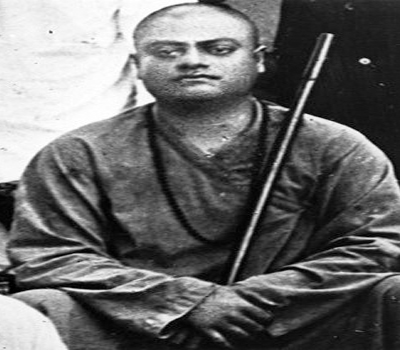
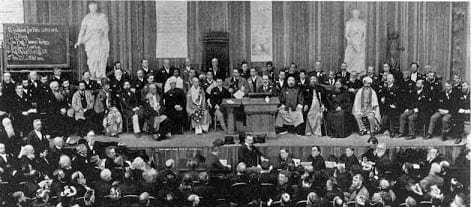

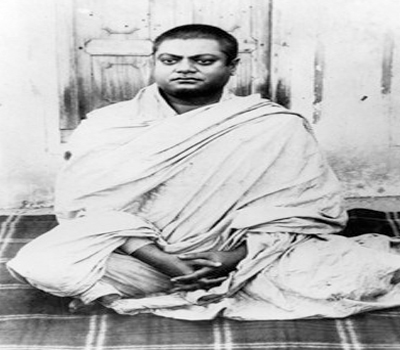
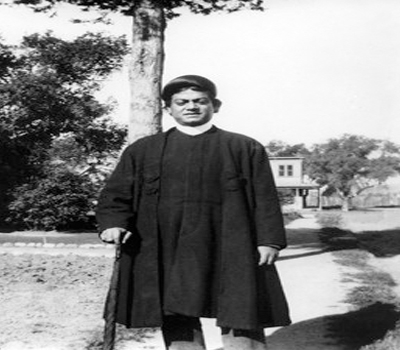
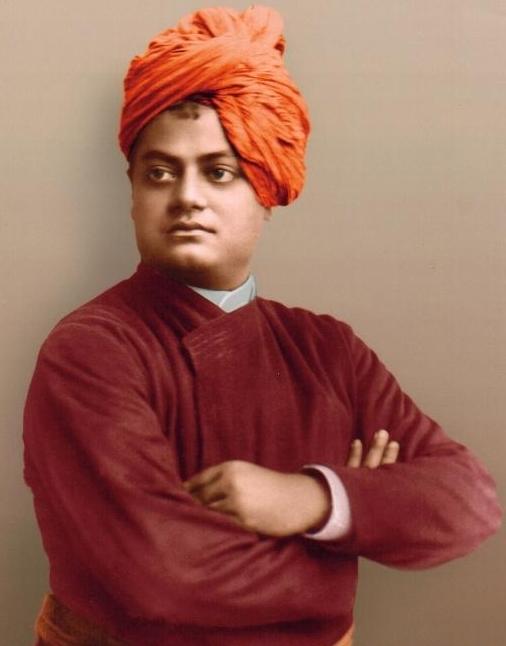
Leave A Comment